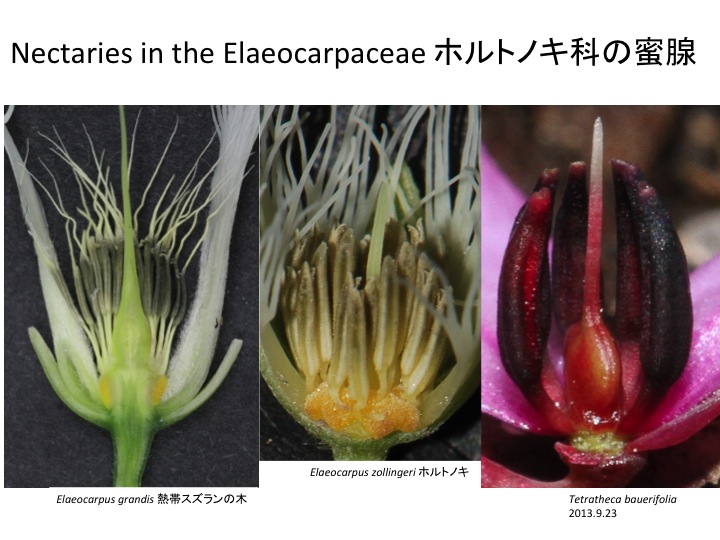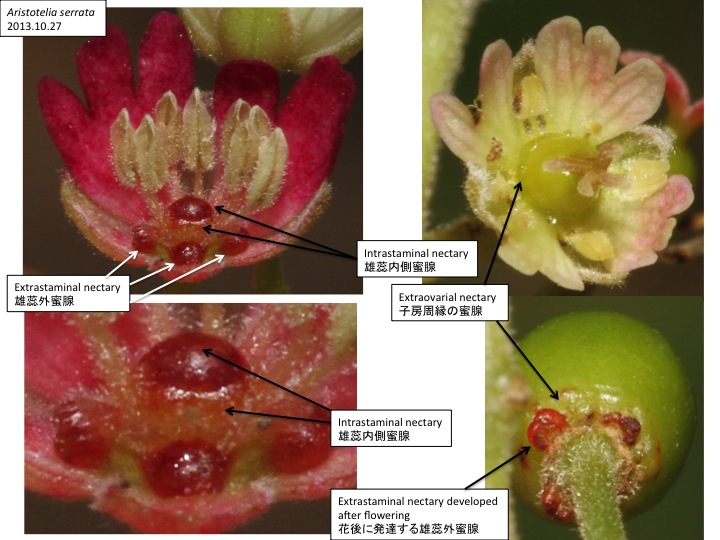ホルトノキ科のホルトノキ属Elaeocarpusは雄蕊の外側、花弁の内側に両者と互生の位置に蜜腺を形成する。一方、同科のTetrathecaやPlatythecaは雄蕊外側に蜜腺を持たず、子房周縁から蜜を出している。Elaeocarpus species form extrastaminal nectaries. On the other hand, Tetratheca and Platytheca in the same family produce nectar from the surface of ovary.
ニュージーランドに広く分布するAristotelia serrataの雄花は、雄蕊外蜜腺と花の最中心部の蜜腺の2種類の蜜腺を持つ。観察した全ての雄花で雄蕊外蜜腺はあったが、花中央部蜜腺は未発達の雄花もあった。花最中心部蜜腺は雌しべの子房周縁の蜜腺が変化したものなのかもしれない。
雌花は子房の周縁と、退化した雄蕊の外側に雄蕊外蜜腺が発達する。開花時には雄蕊外蜜腺は見えないが、果実が発達する段階で観察すると子房周縁の蜜腺の痕跡とともに、肉眼で見えるほど大きな雄蕊外蜜腺が形成されている。雌しべや雄しべが退化しても、雄蕊内蜜腺や雄蕊外蜜腺ができるということは、蜜腺が雌しべや雄しべに付随してできるのではなく、蜜腺形成機構として独立に存在している可能性を示唆しているのかもしれない。花器官の間にどのように蜜腺を形成するかの機構はまったくわかっていない。
A male flower of Aristotelia serrata have both extrastaminal nectaries and central nectary. The central nectary may be a modified extraovarial nectary. Only extraovarial nectaries are visible in a young female flower but both extraovarial and extrastaminal nectaries become conspicuous during fruit maturation.


